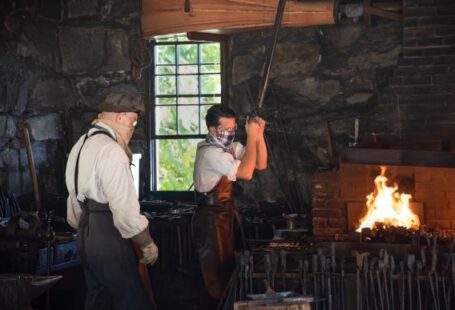In the history of home heating, the Middle Ages were truly an age of innovation. During this time, the fireplace and the chimney emerged as essential features of the medieval home. These architectural elements not only provided warmth but also revolutionized the way people lived. Let’s take a closer look at the significance of the fireplace and the chimney during the Middle Ages.
The Evolution of the Fireplace
In the early Middle Ages, homes were often heated by a central hearth placed in the middle of the room. This simple setup allowed for minimal heat distribution and smoke ventilation. However, as the Middle Ages progressed, the fireplace evolved into a more sophisticated structure.
The introduction of the fireplace grate, a metal framework that held burning logs, allowed for more efficient heating. The grate elevated the fire, allowing air to circulate underneath and enhance the combustion process. This innovation led to increased heat output and improved the overall heating capacity of the fireplace.
Chimneys: A Game-Changer
While the fireplace was a significant development itself, it was the addition of the chimney that truly transformed medieval homes. Prior to chimneys, the smoke from the fire would fill the room, causing discomfort and health issues. The chimney solved this problem by providing a dedicated pathway for smoke to escape.
The earliest chimneys were simple structures, often made of wood or wattle and daub. They were built alongside the fireplace and extended through the roof. These early chimneys were effective in directing smoke out of the home, but they also posed a risk of fire due to their wooden construction.
As the Middle Ages progressed, chimneys became more elaborate and were constructed with bricks or stone. The introduction of these durable materials not only reduced the risk of fire but also allowed for taller chimneys. Tall chimneys improved the draft, enabling smoke to be carried away more efficiently.
The Social Significance
The invention of the fireplace and the chimney not only transformed the physical aspects of homes but also had a profound impact on society. The fireplace became the focal point of the medieval home, around which daily activities revolved. It provided warmth, cooked food, and served as a gathering place for families and communities.
The fireplace also played a significant role in the social hierarchy of the Middle Ages. The size and grandeur of the fireplace often reflected the wealth and status of the household. In castles and manor houses, fireplaces were large and ornate, showcasing the power and prestige of the nobility.
A Symbol of Comfort and Security
The fireplace and the chimney went beyond their practical functions and became symbols of comfort and security. In a time when the world outside could be harsh and unforgiving, the warmth of the fireplace offered solace and a sense of protection. The crackling sounds of the fire and the dancing flames provided reassurance and a feeling of home.
Conclusion: A Lasting Legacy
The Middle Ages were an era of great innovation, and the fireplace and the chimney were among the most significant advancements of the time. These architectural elements not only provided warmth but also reshaped the way people lived and socialized. Their legacy can still be seen today in the design of our homes and the comfort they provide. The Middle Ages truly were the age of the fireplace and the chimney, marking a turning point in the history of home heating.





